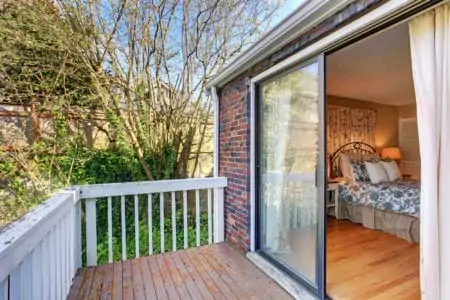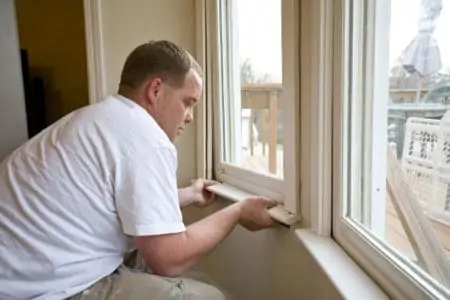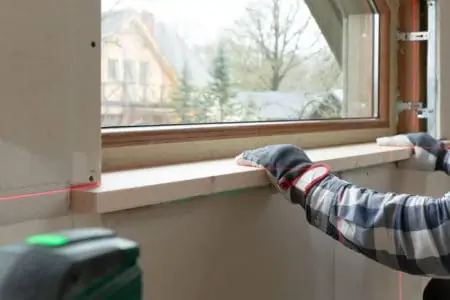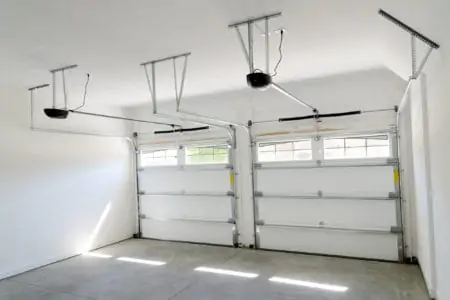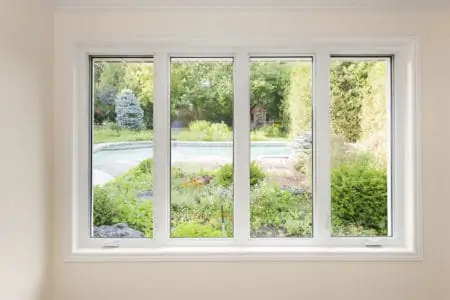There are few things more frustrating than a sliding screen door that won’t slide. Knowing how to remove a sliding screen door is crucial if you want to maintain it and prevent it from sticking.
We show you how to take off a sliding screen door and replace it once you’ve cleaned it. We also give you hints and tips to make the task easier.
Key Takeaways
- Locate and remove screws: Find the screws that hold the rollers in place and turn them counterclockwise to loosen the wheels.
- Lift the door: Carefully lift the screen door to release it from the bottom track, then pull it towards you and place it on the floor.
- Clean and replace: Clean the rollers and tracks before putting the door back on. Hook the top of the door on the top track and secure the wheels in the bottom track.
- Tighten screws and check: Tighten the screws to hold the wheels in place and test the door to make sure it slides smoothly and securely on the tracks.
How to Remove a Sliding Screen Door
It’s worth differentiating between sliding screen doors and storm doors. Storm doors offer a greater level of security and come with glass inserts. Sliding screen doors are typically meshed, making them much lighter and easier to manage.
Barn-style sliding doors have rollers on the top track rather than at the base. The weight of the door holds it in place, but they are still meshed to keep insects at bay. It means you can hang a barn door without setting the frame in a wall.
So, you have a sticky screen door that refuses to budge. How do you get it to slide without causing damage? Whether it’s a new or old screen door, the first thing you need to do is remove it.
But first, you will need the right tools to get the job done efficiently.
What You’ll Need
- Phillips or flat-head screwdriver.
- Power screwdriver.
1. Prepare the Door for Removal
Remove any curtains and rails before attempting to remove the door. It makes the task easier and removes obstacles later down the line.
2. Locate the Screws
Most sliding screen doors have screws that raise and lower the rollers that run in the track. The screws also hold the wheels in place. It is possible to get a barn-style screen door without wheels, but they are far less common.
3. Remove the Screws
Depending on the type of screws you have, use the Phillips or flat-head screwdriver to remove each screw. Turning the screws counterclockwise loosens the wheels, making it easier to remove the door.
Keep turning until the screw heads are visible in their sockets. Eventually, the door will feel loose enough for you to lift it out of the bottom track. You don’t need to take the screws out completely, and you can test this by lifting the door.
4. Lift the Door
Screen doors are pretty light, so you should be able to remove the door on your own. Lift the door so that you can see the base of the wheels. There should be one wheel on either side of the door.
5. Unscrew the Headstop
Use the Phillips screwdriver to remove the screws from the headstop. You will find it in the top corner of the frame. You can use a power screwdriver for this if the screw is too difficult to remove.
Important Point
Be careful that the door doesn’t fall out once you remove the headstop.
6. Remove the Door
Slide the flat-head screwdriver under the door, taking care not to damage the wheels. Lift with the screwdriver, and the door should rise. Once the rollers are free from the track, grab the base, pull the door towards you and place it on the floor.
Now, pull the top of the door away, and it should come free. You may need to lift the door as you pull it to release it from the top track. Place the door against a wall on a flat surface.
How to Put a Sliding Screen Door Back On the Tracks
Removing the patio screen door for cleaning is only half of the task. Once you have cleaned the rollers and tracks, the door needs to be mounted back in place. Here’s how to do it.
What You’ll Need
- Phillips screwdriver.
- Flat-head screwdriver.
1. Insert the Top Rack
Hook the top of the door at an angle, so it rests on the top track. Make sure the wheels are secure in the metal track tab.
2. Insert the Wheels in the Bottom Track
Walk the door towards the frame. Lift it to allow the wheels to clear the bottom track and lower it gently. Give the door a wiggle to double-check they are correctly situated.
3. Screw the Headstop Back In Place
Reinsert the headstop in the top corner of the door frame, tightening the screw to hold the door in place.
4. Tighten the Screws
Grab the screwdriver that corresponds with the type of screws you have and tighten them so that the wheels are fixed in place. Turn the screws clockwise, and the rollers should feel more secure.
Try lifting the door to see if it will come free of the track. If it feels secure, you are good to go.
Why Can’t I Remove My Sliding Screen Door?
The first thing to check is that nothing is wedged in the track stopping the door from lifting out. Even the smallest objects can cause your sliding screen door to become stuck. Second, a damaged wheel could prevent the door from coming free.
Another common reason for the door not lifting out is rusted wheels. Once corrosion sets in, they stick fast and cannot be adjusted in height to make them easier to remove.
It is possible to unscrew the track to remove the blockage. It might be the best option if you want to minimize damage to the track or the wheels.
To free the wheels, you should always rotate the screws at the base counterclockwise (left). If you turn the screw the other way, you could be locking the wheels further in the tracks.
FAQs
Get More from Your Sliding Screen Door
Sliding screen doors are a vital part of your home’s exterior. When they stick or stop sliding, you may need to remove them to clear the blockage. Their lightweight design and materials make them easy to lift out and simple to slot back in.
Our guide couldn’t be more straightforward, so now you have no excuse the next time your sliding screen door plays up. All it takes is a little patience, a few basic tools, and about 30 minutes of your time.
